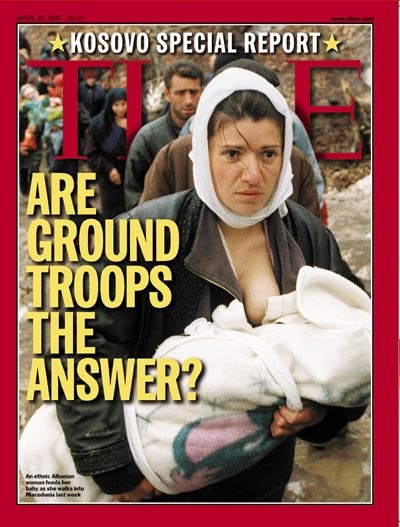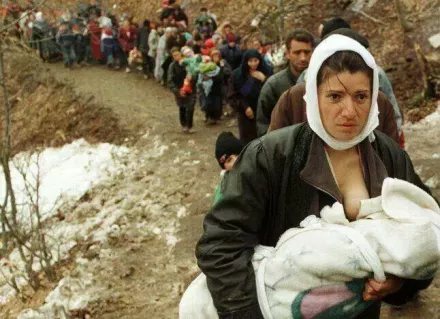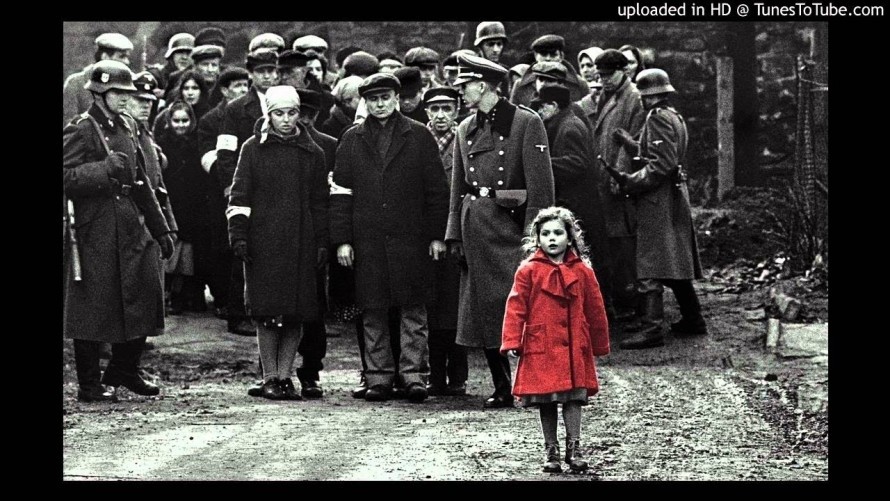Image

On April 12, 1999, Time Magazine printed a powerful cover photo by photographer Damir Sagolj. It shows a refugee convoy fleeing violence towards the Macedonian border. In front is an Albanian mother, Ms Sherife Luta (wearing a white headscarf) breastfeeding her six-month-old daughter, Besiana.

In his paintings Constant often reflects on specific current affairs. When researching Constant’s painting “Les expulsés”, 1999, this specific Time Magazine cover by photographer Damir Sagolj caught my eye. The white headscarf seems to intrinsicely link Damir’s photo to Constant’s painting. Further clicks brought me to the full image of the refugee convoy, see image below.
Immediately, the mirroring of the two images strikes home. I did not find this specific edition of Time Magazine in Constant’s archive but doubtless he must have seen it. And not just the cover but especially the full image, which would have most likely been printed in the cover article The Road to Hell by Joanna Mcgeary.

In the painting Constant mirrors the curve of the convoi and uses the white head scarf as an immediate eye catcher. With these two motives he creates a link with the photo and then flips the perspective. The spectator becomes part of the convoi following behind the woman and the girl. The convoi is now walking to a place in the distance fading into his own signature. A safer place with a more hopefull future perhaps?
The woman with the white headscarf is now seen from behind as she joins the convoi. This is an interesting choice since in the photo she is the main protaganist and her determined resilience draws the spectator in. Her bare breast representing at the same time her vulnerability and her strength. The baby invisible in its white wrap fuels its mothers determination. By reversing the direction he shows the long road ahead of her. She is closely followed by a little girl in a pink jacket. It is the same colour pink as the faded print on the blanket the baby is wrapped in in the photo. As if Constant wants to make sure that the baby in the wrap will have the chance to grow into a little girl.
In the photo scattered through the line of people several red details stand out. Constant is a big fan of red and in most of his paintings you will find a detail of that colour, whether it is a collar, a flag, a seat, shoes, lips or, more gruesome, a puddle of blood. In this painting he gathers the scattered red details from the photo and merges them into one red jacket midway the convoi.
Smaller than the figures surrounding it, the jacket is obviously worn by a child. It evokes the image of another red jacket. That of the small girl in the movie, Schindler’s List, which stands out because the entire movie is in black and white. In the movie seeing the little girl in the red coat amidst the horror of the deportation of the Kraków Ghetto elicits a pivotal moment for Oskar Schindler, the movie’s protagonist. He brakes down emotionally when the scope of the Nazi scheme sinks in. This consequently propels him into his quest to use his factory to save as many Jews from extermination as he can.
It is unclear whether Constant has seen Schindler’s List. All the same, the one child in the red coat creates a sense of personification. By lifting out one child amongst the masses the painter and the cinematographer allow the spectator to connect to and emphathise with the suffering. It gives the victims a face.

The painting as well as the photograph remain a generous source of wonder and contemplation to me. Unfortunately, as the schoolgirls in the video of Stedelijk Museum Schiedam mention “it was more than twenty years ago but it could easily be today”.
Kim, director of Fondation Constant.
Les expulsés is part of the video series “Constant in oorlog” by Gerrit Schreurs commissioned by Stedelijk Museum Schiedam, see links under related. The work was also exhibited in the installion by Antonis Pittas for the exhibition Constant 101: The Future Can be Humane at Cobra Museum of Modern Art, Amstelveen.